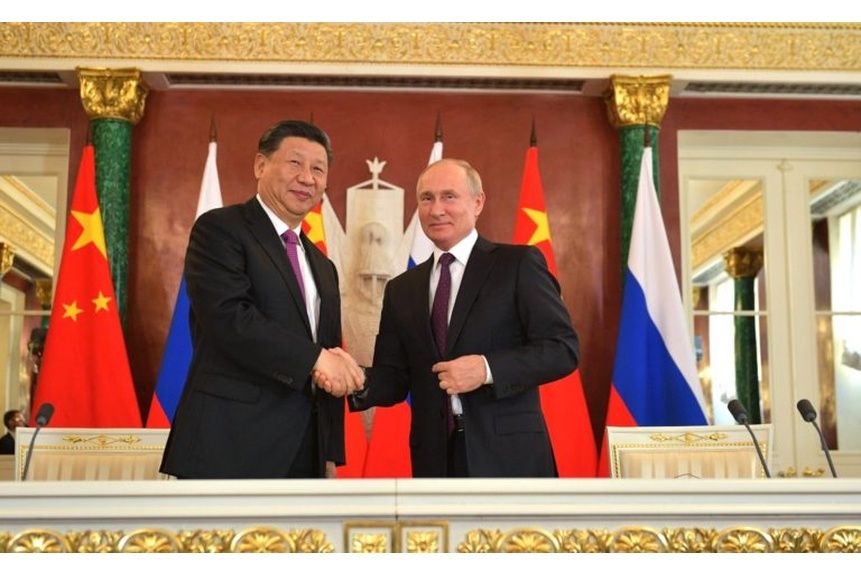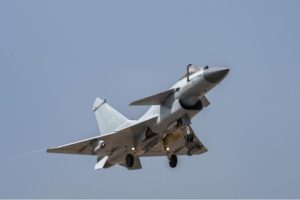
Russia Concerned About Dependence on Chinese Technology
By Ray Finch
Over the past decade, as the Kremlin leadership has touted and celebrated its growing ties to China as it has sought to distance itself from the West. This turn toward Beijing accelerated after Russia’s invasion of Ukraine, as Western governments imposed additional sanctions and many Western firms departed.

President Putin and Chinese President Xi, Kremlin, June 2019.
“Russia’s conflict with Ukraine is making Moscow too dependent on Chinese technology…”
Over the past decade, as the Kremlin leadership has touted and celebrated its growing ties to China as it has sought to distance itself from the West. This turn toward Beijing accelerated after Russia’s invasion of Ukraine, as Western governments imposed additional sanctions and many Western firms departed. As the first excerpt from Russian television channel ORT describes, during President Xi’s visit to Moscow in March, there was talk of a comprehensive partnership and strategic cooperation. Having only just recently been labeled as a war criminal by the Hague, the Chinese leader’s decision to make his first foreign visit since the onset of COVID-19 speaks volumes regarding his support for Putin. While political relations today are cordial, some in Russia are beginning to question their country’s growing economic and technological dependence upon China.[i] The second excerpt from Russian-language Turkish news service TRT captures this concern, which attributes it to Russia’s conflict with Ukraine. Not only are there security concerns regarding Russia’s dependence on this technology, but “Russian officials also fear that the growth of the presence of Chinese companies and developments in the Russian market could hinder the development of their own developments in the field of security.”[ii] The article concludes by quoting statistics regarding the growth of Russian firms using “Chinese cybersecurity solutions,” growing from 5 percent in 2022 to nearly 60 percent today. Should the current trend continue, China will gain considerable leverage over Russian information processing.
Sources:
Pavel Matveev, “Завершился государственный визит председателя КНР Си Цзиньпина в Россию (Chinese President Xi Jinping’s state visit to Russia ends),” ORT (Russian Main TV Channel), 22 March 2023. https://www.1tv.ru/news/2023-03-22/449553-zavershilsya_gosudarstvennyy_vizit_predsedatelya_knr_si_tszinpina_v_rossiyu
The farewell ceremony took place at Vnukovo airport. State flags, anthems of the two countries, after which the Chinese leader followed the red carpet to his plane.
…A full program, many meetings and negotiations, as a result of which important documents were signed and a joint statement was published on deepening comprehensive partnership and strategic interaction…. In particular, Russia will support Chinese business, which is replacing Western companies. Settlements between the two countries have already mostly switched to rubles and yuan….
“Российские чиновники опасаются растущей зависимости от Huawei (Russian officials wary of growing reliance on Huawei),” TRT (Turkish News Service in Russian), 20 April 2023. https://www.trtrussian.com/novosti/rossijskie-chinovniki-opasayutsya-rastushej-zavisimosti-ot-huawei-12905704
Russia’s conflict with Ukraine is making Moscow too dependent on Chinese technology, as US and EU sanctions have barred Russian firms from accessing Western technology. Instead, the Russian Federation is forced to reorient itself to Chinese developments, in particular, to deliveries from Huawei….
…The document cited by the publication says: some high-ranking Russian officials are concerned that Chinese companies such as Huawei Technologies Co. Ltd. may take a dominant position in the Russian market, thereby posing a risk to the information security of the country. …In a report compiled by the Ministry of Digital Development of the Russian Federation in the summer of 2022, microcircuits, network devices and electronics are highlighted as areas of particular vulnerability.
…In addition to fears of growing dependence, Russian officials also fear that the growth of the presence of Chinese companies and developments in the Russian market could hinder the development of their own developments in the field of security…
…As TRT previously wrote in Russian, more than half of companies in Russia plan to switch to Chinese equipment in the field of cybersecurity after European and American manufacturers leave the Russian market.The Russian newspaper Kommersant, citing a survey by K2Tech integrator, notes that until 2022, only 5% of Russian companies used Chinese cybersecurity solutions. Now 60% of companies have switched to them or are planning to switch to them to replace the products of departed Western players – Cisco, Palo Alto, etc….
Notes:
[i] This concern has been growing for the past several years. For additional background, see: Ray Finch, “Russia-China: Potential Allies or Adversaries?,” OE Watch, November 2019. https://community.apan.org/wg/tradoc-g2/fmso/m/oe-watch-articles-2-singular-format/340594
[ii] The Kremlin has been careful not to publicize information regarding unfair Chinese business practices and espionage to protect the warming relationship between the two countries. For some relatively recent background, see: Ray Finch, “Russian Concerns over Chinese Espionage,” OE Watch, December 2020. https://community.apan.org/wg/tradoc-g2/fmso/m/oe-watch-articles-2-singular-format/379981
Image Information:
Image: President Putin and Chinese President Xi, Kremlin, June 2019.
Source: http://www.kremlin.ru/events/president/news/60669/photos
Attribution: CCA-SA 4.0 Intl
Distribution A: Approved for public release
Categories:
Tags:
Related Products
Chinese Military Exercises Highlight Improvements in Joint Operations






